Rustic quince apple jam uses quinces with the skins on to retain the most quince flavour, paired with a blend of spices; coriander, cardamom, cinnamon, vanilla bean. This rustic quince apple jam has a chunkier consistency than that achieved if the fruit is peeled and is amazing on a croissant or toast with butter or in a cocktail such as a brandy sour, or a quince apple jam gin sour cocktail, a variation on Harry Craddock’s (1930) gin based Marmalade cocktail appearing in The Savoy Cocktail Book, where the warming sweet spices and quince fruity floral flavour are delicious. This rustic quince apple jam is inspired by the recipe in Alex-Elliott-Howery & James Grant’s (2016: 128) book Cornersmith for quince and apple jam, although I have included the quince peel in this version of the recipe along with a complex spice mix. The quince peel contains the main concentration of quince flavour, so it seemed like a good idea to include the peel in this jam recipe. Including the peel is also a great way to use this up rather than throwing it away. For more information on the amazing flavour of quinces and ideas on how to pair them with spices see my post on Vintage quince cordial.
I was recently gifted a large bag of apples from a friend whose daughter had gone on a farm stay. These apples were delicious and so juicy on the inside but had been pecked by birds and had other issues on the outside, so I was not able to include their skin in the jam. If you have better apples on the outside, I recommend including the apple skins and have done this in other batches I have made of this rustic quince apple jam. The reason I made this rustic quince apple jam was to preserve the apples in a way that would ensure they did not go to waste. I am a novice jam maker having only ever made plum jam from fallen plums from a tree in my garden so I share here my experience of making a few batches of this rustic quince apple jam as a jam sampler – I’ve shared some of the mistakes I made and ways to either avoid or correct them in the tips section below. I highly recommend reading the section Making jam and marmalade in Cornersmith (Elliott-Howery & Grant 2016: 250-251) if you are interested in trying your hand at making jam for the first time.
Quick history of jam and the jam formula 1:1 fruit/vegetable to sugar
Jam & accessibility of sugar as a means of preserving – Jam is a relatively recent invention as it uses sugar and as Andy Connelly (2013) writing for The Guardian explains an economical source of sugar was not available prior to the 19th Century, before this sugar was considered an expensive and luxury ‘spice’ and preserves using sugar were eaten in much smaller quantities as a delicacy.
Pectin – Connelly (2013) in The Guardian eloquently explains that one of the key features of jam are the sticky strands of pectin that bind it together. Homemade jam offers a means of preserving in season fruits and vegetables with sugar via a cooking process that may add pectin in the form of lemon juice or use fruit that has higher pectin content paired with lower pectin content fruit. Fruit such as apples and quinces have more pectin than strawberries for example.
Jam formula – The usual formula for jam is 1:1 – that is equal parts of fruit or vegetable to be preserved with sugar, along with lemon juice. It is possible to reduce this 1:1 ratio however, reducing the sugar content can cause issues with setting point and shelf life so best to follow a recipe that you trust before varying the sugar content of your jam. David Leibovitz (2015) in his blog post on Strawberry jam helpfully explains that the jam 1:1 formula is based on the weight of the fruit and sugar. Leibovitz offers an alternative formula of around 1:¾ in his blog post on strawberry jam. The Cornersmith (Elliot-Howery & Grant: 2016) recipe I have used as the basis of this rustic quince apple jam has less sugar than the 1:1 formula offering a ratio where for each 1 gram of fruit there is .8gm of sugar – I have maintained this ratio being a novice jam maker.
How to make this rustic quince apple jam recipe from scratch
Rustic quince apple jam is made by slowly simmering quinces cut into small pieces retaining the skin along with apples, with water and spices including cinnamon, star anise, cardamom, coriander and vanilla, on the stove top for about an hour. Then lemon zest and juice and low GI cane sugar are added to the simmered fruit and spices and the heat is increased to a rolling boil for about 30 minutes or until the jam thickens and setting point is reached. The rustic quince apple jam is then poured carefully into sterilised jars for storage.
Tips for using quinces and apples in this rustic quince apple jam recipe
Here are my best tips on making rustic quince apple jam with quinces and apples – these are great fruits to begin jam making with as they both have high pectin – which helps to set the jam – quinces are amazing too as they turn bright red when they are ready. I had a large bag of apples to get through, so I made this rustic quince apple jam in a few batches and below are my tips from this experience as a novice jam maker I ran into a few problems along the way and I’ve shared my solutions below so you can either avoid these pitfalls altogether or have some handy tips to overcome them if they do occur. If this is your first time making jam have a look at the section on Making jam and marmalade in Cornersmith (Elliott-Howery & Grant 2016: 250-251) as there are some great tips.
Small batch jams are easier to manage – If you find yourself in a similar position to me – I had around 3.5kg of apples to use in a hurry – it’s better to make a few smaller batches of jam rather than one really big one as the process will be quicker and easier to manage in smaller batches. The bigger the batch of jam the longer the cooking time.
Organic fruit for jam – If you are using quinces in jam it is a good idea to select a top quality organic fruit and to include the skin in the jam as this is where a large proportion of the flavour is located. Apples also have amazing skins with a beautiful colour and could have been used in this jam but unfortunately my apple skins were not in such good shape, so I gave them to my worms. Apples and quinces are both high in pectin so make an easily settable jam. The yellow quince skin lends bright yellow highlights to the jam and I found that including the skin resulted in a more orange overall colour in one batch that I made compared to the brighter red colour of the jam when the skin is removed altogether. There is still a marked colour change to a darker colour when the fruit is cooked though.
Weigh your fruit and sugar – The jam making formula of 1:1 fruit to sugar is based on the weight of the fruit and sugar, so it’s useful to measure the weight of your fruit and sugar to match this. A pair of kitchen scales is a very handy piece of equipment for jam making in my opinion and takes some of the guess work out of the process. It’s important to note that in this jam, the cores are removed from the fruit, so you need to weigh the fruit once you have removed the cores to get an accurate measure. The first batch I made I guessed the weight of the whole fruit and ended up with too much cooking liquid – see below how I worked through this and still ended up with a usable jam and a delicious syrup.
Coring quinces – Quinces are very hard before they are cooked and can be difficult to core – I find the easiest way is to quarter the whole fruit and then to lay one quartered section on its side and undercut into this to remove the section with the seeds. The ends of this section can be trimmed back and used just discard the very hard core with the seeds.
Use lemon juice to avoid oxidisation – When you are preparing the fruit by washing and then coring and cutting into small cubes and in the case of my imperfect apples peeling place the pieces in a bath of water with the juice of a lemon – this will stop the fruit oxidising and turning brown while you are preparing the other pieces.
Prepare your jars – Prepare your sterilised jars while you are cooking the fruit on a low simmer as there is ample time to do this step then and it will make the end point of the jam making process so much easier. See my Resources page for more tips on how to sterilise jars – the easiest way is to wash them in hot soapy water, rinse thoroughly, and then to place the jars on a cookie tray in a low oven 110 C for 15 minutes and to boil the lids for 5 minutes on the stove top and allow to air dry.
Water and the quince jam cooking process – Quinces need to undergo a cooking process before you eat them – on the stove top with water or in the oven by baking or using vinegar in a pickle. Raw quinces have a chalky hard consistency. Adding water to your jam at the initial cooking stage is important when using quinces as they retain a lot of this water as they cook, changing from being chalky and hard to plump and luscious and beginning to break down at the edges. The most important thing about this simmering stage is to cook and soften the fruit all the way through. If the fruit is softened evenly then the sugar will dissolve evenly throughout the jam – if there are hard chunks of fruit these can candy and make unevenly hard candied pieces in the jam that have an unpleasant texture. The amount of water needed can vary depending on the fruit and their ripeness and this rustic quince apple jam recipe does have quite a bit of water added for cooking and softening the quinces but this is a good thing because the quinces absorb a large quantity of water as they cook and this cooking liquid also means that you will have a nice softly set jam. However, if you should run into issues here are some tips below to help.
Very chunky jam – This recipe for rustic quince apple jam leaves the skins of the quinces and apples on and this makes for a chunkier style jam than recipes where the skin is removed. The important thing is to check that the fruit pieces are evenly softened and cooked through. Turn down the heat when you are done simmering the fruit and think it is cooked and check this with a fork as you would to check if a potato is cooked. If the fork slides in easily even though the jam does have some chunks you are ok. If it does not and the fruit is still hard you need to simmer for a little longer. If you find the jam texture is too chunky for your taste but the fruit is cooked through, you can use a potato masher to gently break up the larger quince pieces once they are thoroughly cooked and softened.
Too much cooking liquid – If there is too much cooking liquid when you arrive at the rolling boil stage and you cannot get your jam to set as it has liquified you can remove some of this liquid using a ladle and another clean saucepan, turn the heat off first before you remove the excess water. Reserve this liquid and strain adding any solid fruit pieces back to the jam. This rustic quince apple jam syrup is delicious for use in cocktails or as a syrup for desserts.
Checking setting point – To check the setting point of the jam place a small saucer in the freezer prior to starting your jam making. After you have cooked it at a rolling boil for about 30 minutes and noticed the colour start to change to deep red and the boil slow turn off the heat and check for setting point by placing a small spoonful of jam onto a saucer that you have placed in the freezer earlier. The hot jam will cool down and show you how it will be once it’s cooled so you can see if it has set. After you allow the jam to cool down see if you can run your finger through the middle and the track remains intact – if the jam stays put it’s set. The jam will set more as it cools down gradually over time and erring on the side of a softer set is preferable as the jam is likely to firm up further as it cools.
Runny unset jam or overcooked jam – If you find your jam does not set – you can still use it in desserts on yoghurt or smoothies and in cocktails and if your jam becomes overcooked there are other uses such as in a glaze or marinade (see Cornersmith Elliott-Howery & Grant 2016: 251 for more tips).
Bottling and storing – I found that an easy way to decant the jam was to allow it to sit for around 10 minutes to cool down a little and then to use a ladle to scoop it into the sterilised jars that were sitting on the cookie sheet. This has the advantage that any spills are caught by the cookie sheet. I found the ladle did quite a good job without too much mess and made it safer because the jam was still quite warm. If you have one you can use a metal funnel to help neatly fill the jars. When cleaning the hot glass bottles avoid applying cold water to the jars as they can crack and break from the temperature change. A warm clean cloth is a good way to clean up any spills or just wait for them to cool down before wiping them down more thoroughly. You do need to wipe the rims with a clean tea towel to remove any excess jam from the seal thread. Allow the jars to sit out on the counter on a chopping block to cool down and vacuum seal before storing in a cool dark place. You can check the vacuum seal by looking at the little dimple in the lid – if that has been depressed and sucked in after the jar is cooled the jar is sealed and ok to keep long term. If the seal has failed to take you can still use the jam just keep it in the fridge for immediate use.
How to use rustic quince apple jam: condiment and cocktail ingredient
Condiment – So obviously you can use this jam on toast or croissants with butter and it is amazing – especially because of the delicious floral fruit flavour of the quinces and the sweetness and zesty taste of the spices. It’s a perfect way to bring a warmth of cinnamon, star anise, vanilla, cardamom and freshness of coriander into relation with the quinces and apples and enjoy it with fresh baked goods. The photographs I have taken of this quince jam are with croissants from our local bakery in Rozelle Victoire.
Cocktail sweetener & flavouring agent – Cocktails are another place where you can use this jam or the leftover syrupy cooking liquor as a flavouring agent and sweetener instead of straight simple syrup – you add a punch of quince flavour, sweetness and spices into cocktails. A quince jam variation on Harry Craddock’s (1930) Marmalade cocktail appearing in The Savoy Cocktail Book calls for marmalade, gin and lemon juice, shaken with ice. This quince jam with floral and fruity tart flavour and complex spices makes a great substitution for the marmalade especially as a winter drink which I have called a quince apple jam gin sour cocktail. It also offers a delicious quince variation on the classic brandy sour recipe, where the sugar is replaced with a teaspoon of jam – the original recipe can be found in Jerry Thomas’ (1862) Bar-tender’s Guide and is discussed by David Wondrich (2015) in Imbibe. Jam may seem an unlikely cocktail ingredient but it’s delicious, and a great way to add seasonal bespoke flavours and sweetness to cocktails.
Rustic quince apple jam: coriander, cardamom, star anise, cinnamon, vanilla bean
Print RecipeIngredients
- 1kg quinces
- 750gms apples
- Juice of 3 lemons
- Zest of 1 lemon
- 1.5kg low GI cane sugar
- 8 ¾ cups water
- 3 star anise
- 1 cinnamon stick
- 1 teaspoon coriander seeds, ground
- 1 teaspoon cardamom, ground
- Seeds and pod from 1 split vanilla bean
Instructions
Place a small saucer in the freezer ready for checking your setting point later in the process
Measure your star anise and cinnamon, grind the cardamom and coriander, split your vanilla bean and remove the seeds and zest one lemon – set these aside for later
Gently rub off the downy grey fur from the quinces and give them and the apples a good wash
Prepare a large bowl with a water and lemon bath by filling with water and the juice of a lemon – add the prepared fruit to this water bath to prevent discolouration due to oxidation during the preparation process
Core the quinces by first quartering and then laying the quarters on their side on a chopping block and undercutting to remove the seeds, trim the ends from this section as they can be used, only discard the very hard core and seeds
Cut the quinces into small 1cm cubes, add them to the lemon water bath
Core the apples and cut into small cubes and add them to the lemon water bath (I peeled my imperfect apples as the skins were no good but it’s great to include the apple skins)
Once all the fruit are prepared, drain and add to a large heavy based wide mouthed pot or jam making pot
Add the water – you need to ensure the base of the pot is always covered with water to avoid burning or sticking – the quince will absorb water as it cooks
Add the spices, split vanilla bean and seeds
Heat over medium heat until a simmer is reached – continue slowly simmering the fruit and spices for up to one hour – stirring frequently and checking the water level – until the fruit begins to break down
While the fruit is simmering sterilise your jars and lids – see Resources– wash them in warm soapy water and rinse thoroughly, place the jars on a cookie sheet and into a 110 C oven for 15 minutes or until dry, boil the lids in boiling water for 15 minutes and then allow them to air dry
Add lemon zest from 1 lemon and juice of 2 lemons
Add sugar and stir to dissolve
Turn up the heat to bring the jam to a rolling boil – allow to boil for 30 minutes or until the quince begins to change to a darker red colour rather than the white colour prior to cooking
If at this stage where the jam has had a chance to rolling boil and there is not setting occurring or the boiling has not slowed and there is a lot of cooking liquid – turn off the heat and remove some of the liquid using a ladle and clean saucepan – strain any fruit pieces back into the jam and reserve the liquid for use as a cocktail and dessert syrup
If you are happy with the reduction of the jam and the boiling has slowed turn off the heat and check for setting point by dropping a teaspoonful of jam onto a cold saucer and testing whether once it has cooled down enough to touch it remains firm in one place if you run your finger through it - this indicates setting point has been achieved – you are looking for the difference between a liquid state and a gel like consistency – the jam will continue to thicken as it cools down
Once setting point is achieved allow the jam to cool for 10 minutes and decant using a ladle and jam funnel if you have one into sterilised jars on a cookie or baking sheet to catch any spills
Carefully wipe the rims of the hot jars with a clean dish cloth and apply the sterilised lids
Wipe any spills from the outside of the jars once the lids have been applied with a warm damp cloth – taking care as they will be very hot
Allow the jam to sit on a chopping block to cool down and vacuum seal
Check the seals by seeing if the button is depressed – if sealed correctly store in a cool dark place for up to 2 years, refrigerate once opened and use within 2 months (If the seals are not depressed simply store in the fridge for immediate use within a few months)
Notes
Recommended books
Harry Craddock (1930). The Savoy Cocktail Book. Dover: New York.
Alex Elliott-Howery & James Grant (2016). Cornersmith: Recipes from the café and picklery. Murdoch Books: Crows Nest, Sydney.
Jerry Thomas (1862, 2018 reprint). The Bar-tender’s Guide: Bon-vivant’s companion. Dick & Fitzgerald: New York, reprint by Thomas Majhen.
David Wondrich (2015). Imbibe. Perigree: New York.
Online jam recipes
Andy Connelly (2013). The science and magic of jam-making. In The Guardian.
David Leibovitz (2015). Strawberry Jam. In David Leibovitz blog.
Christina Ward (2018). From jam to jerky: water activity and the science of preservation. In Serious Eats.
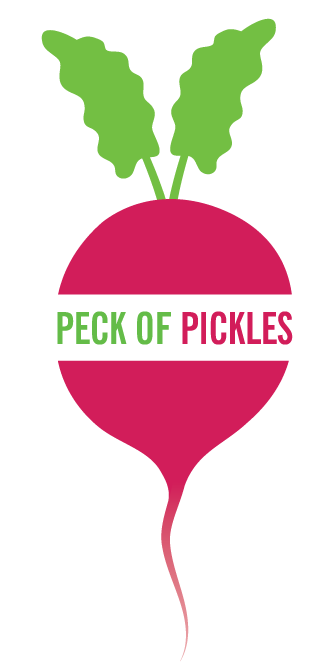
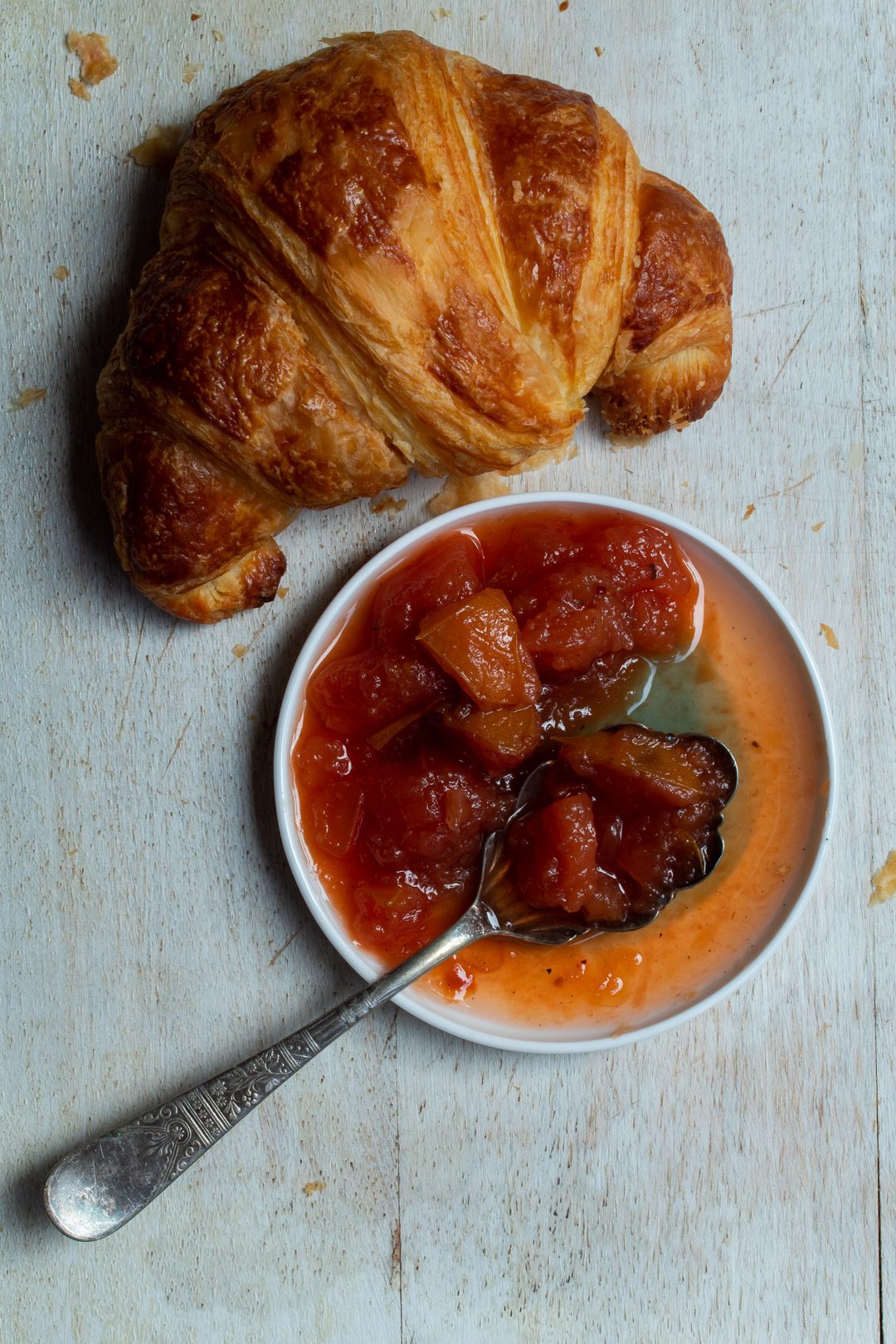
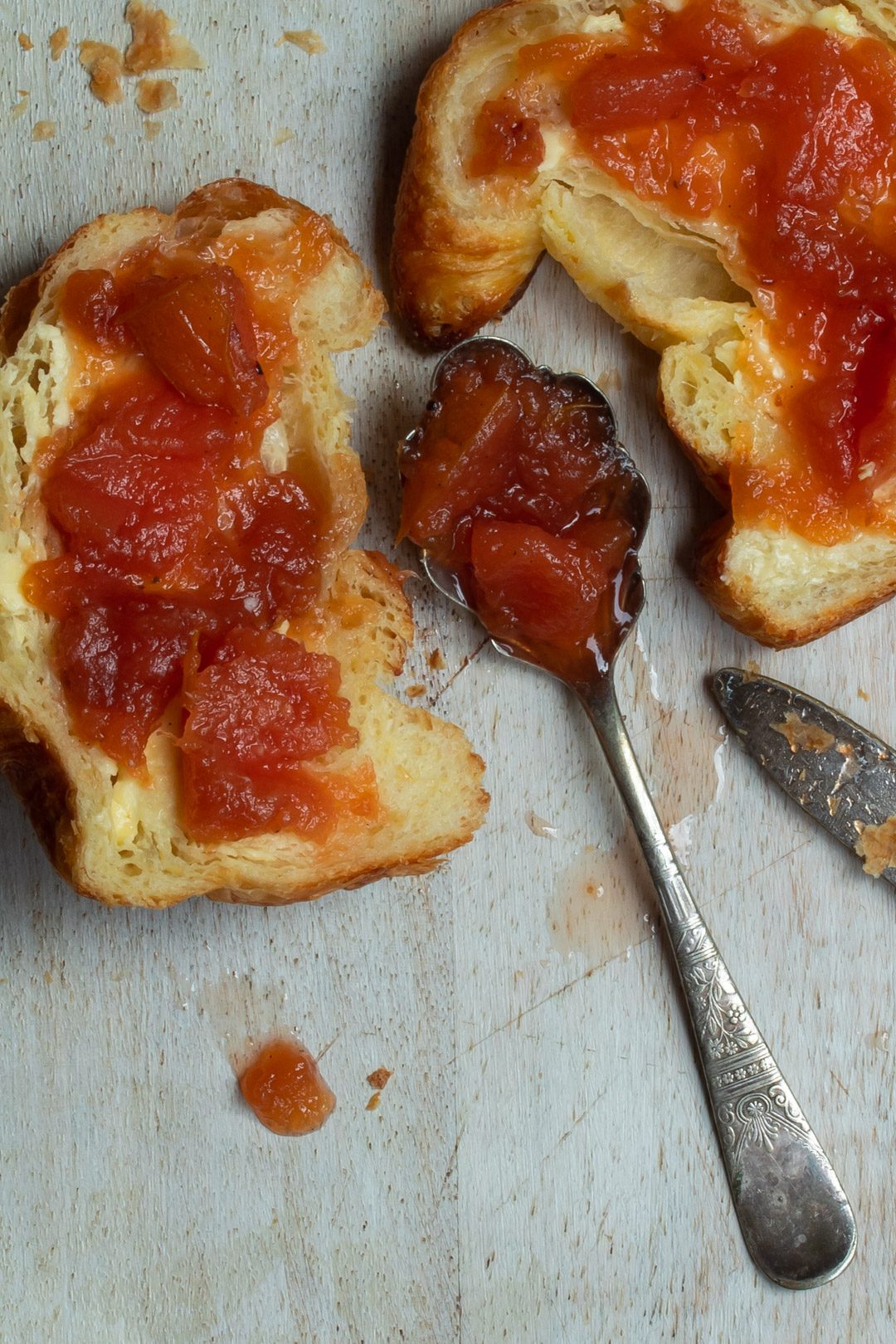
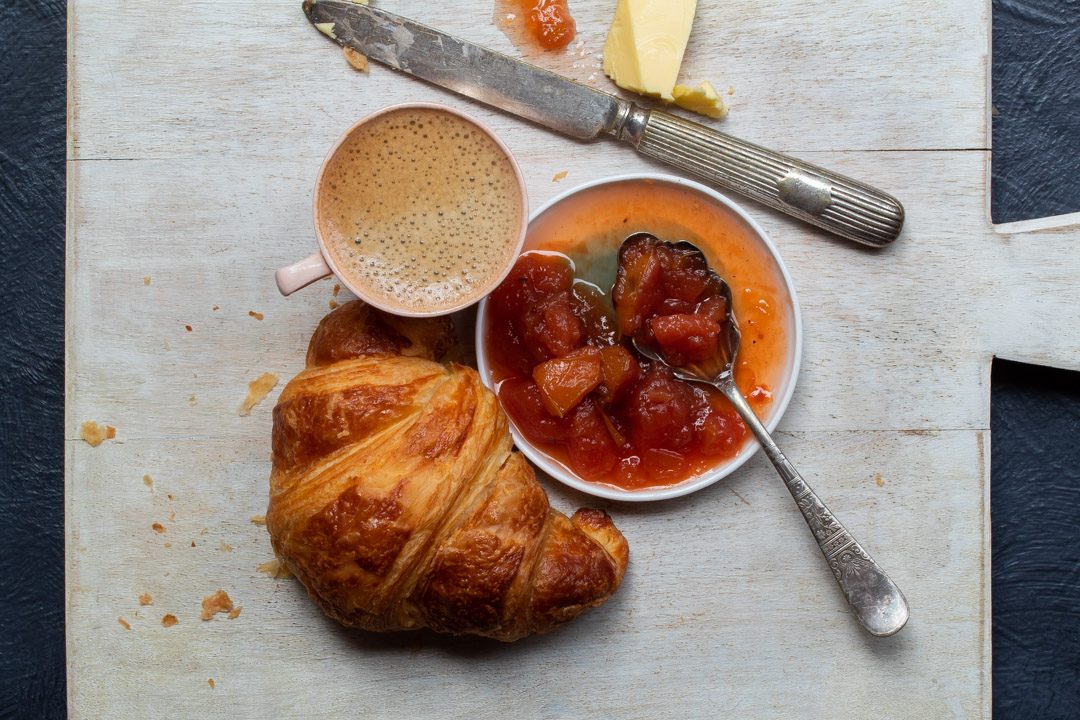
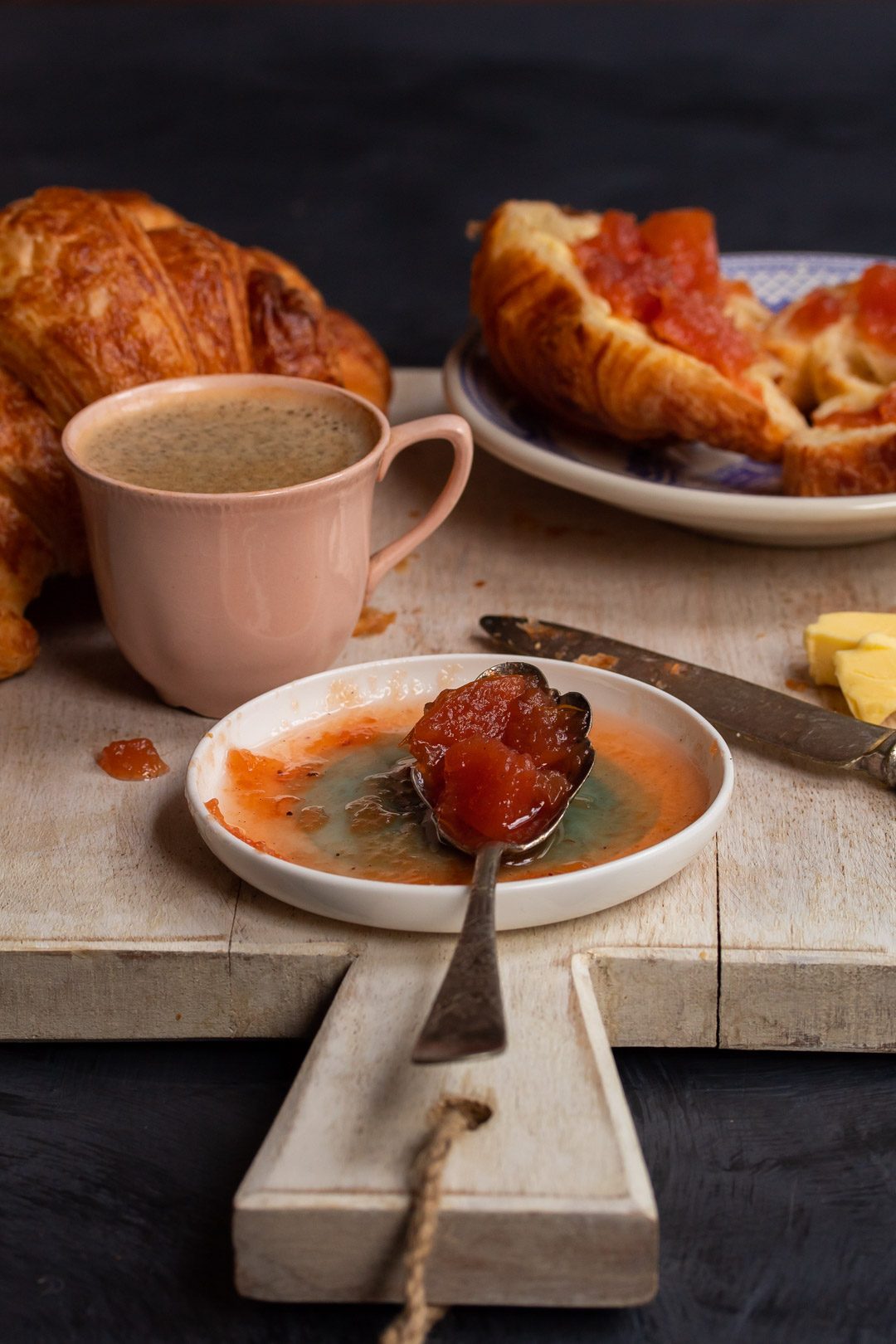
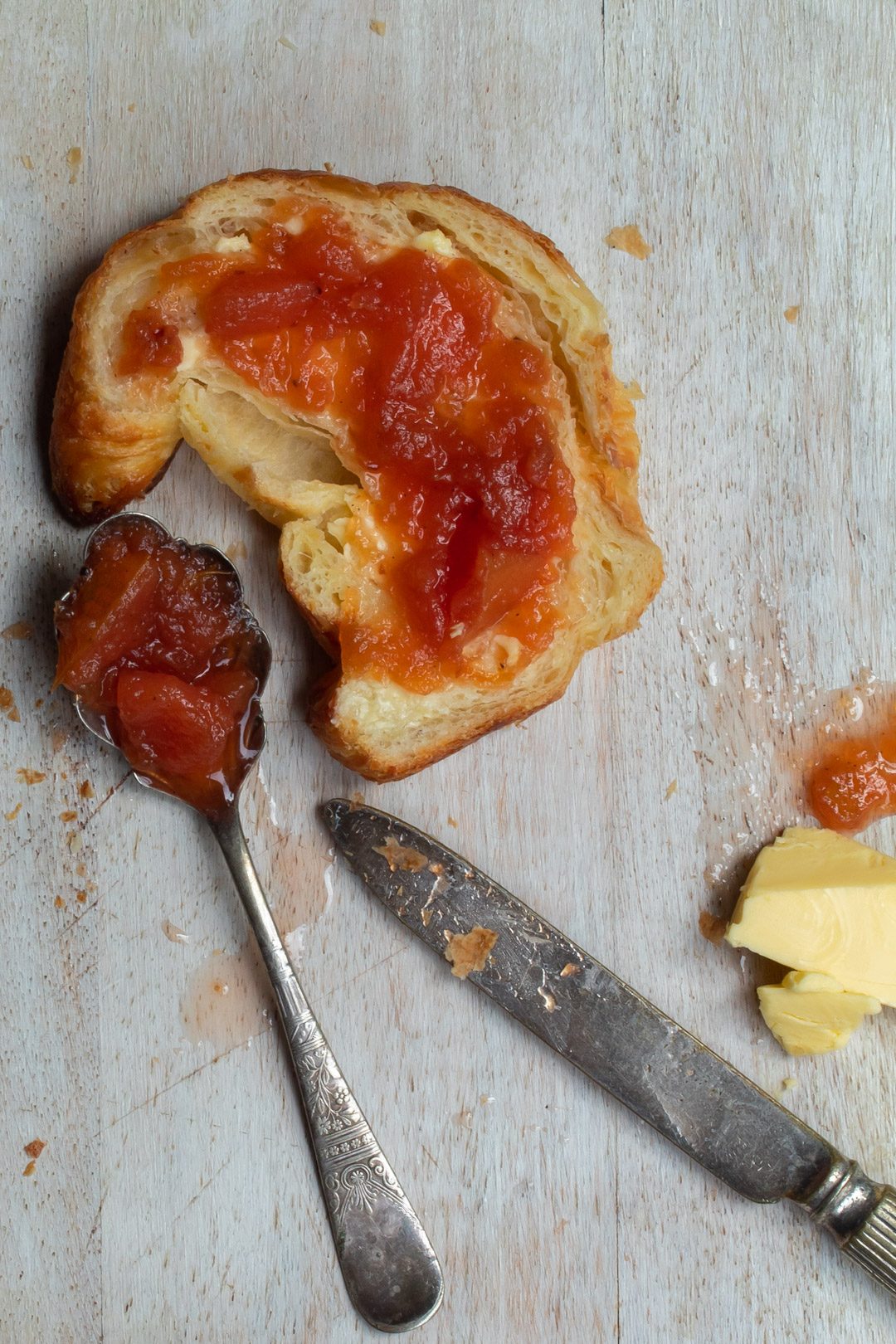
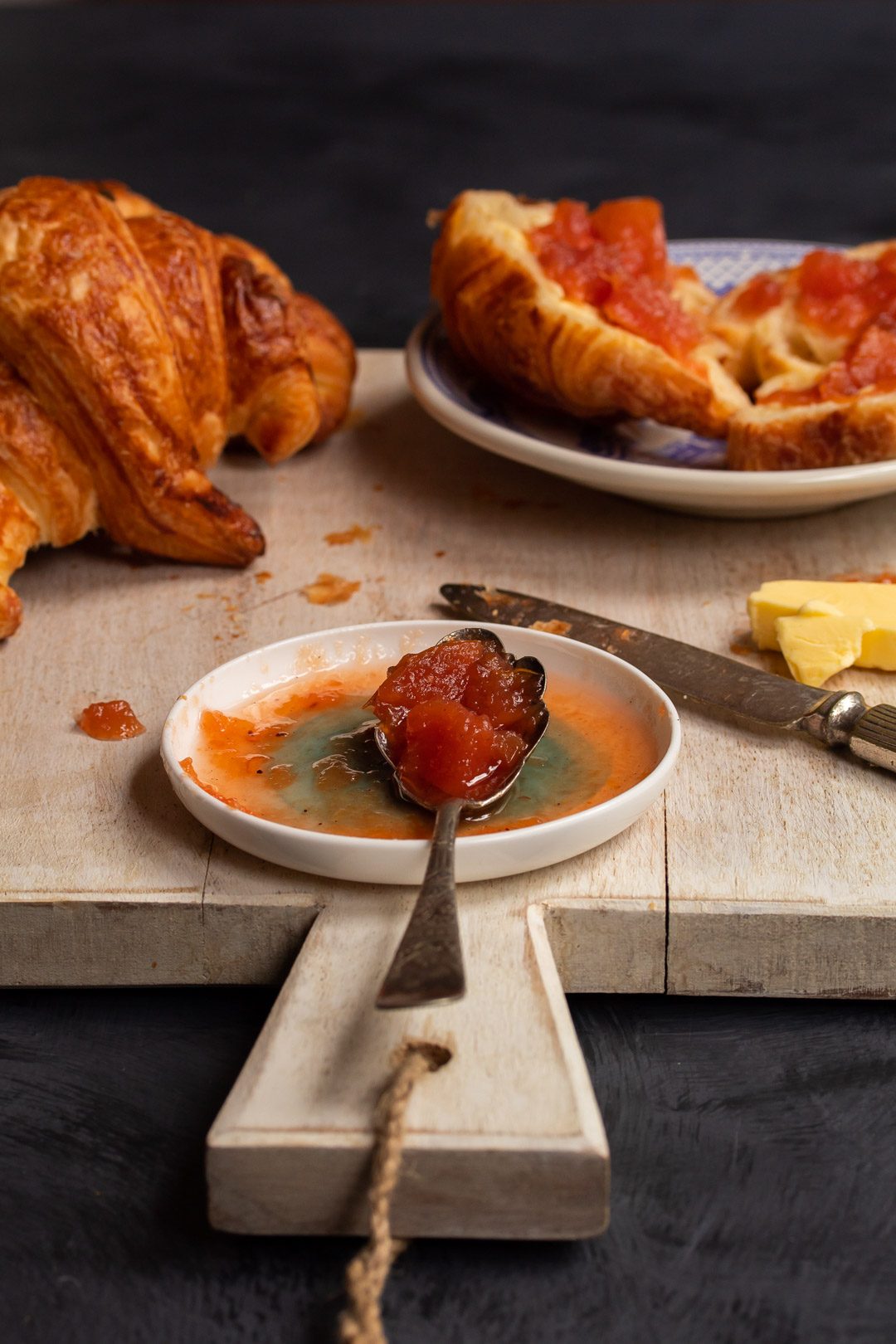
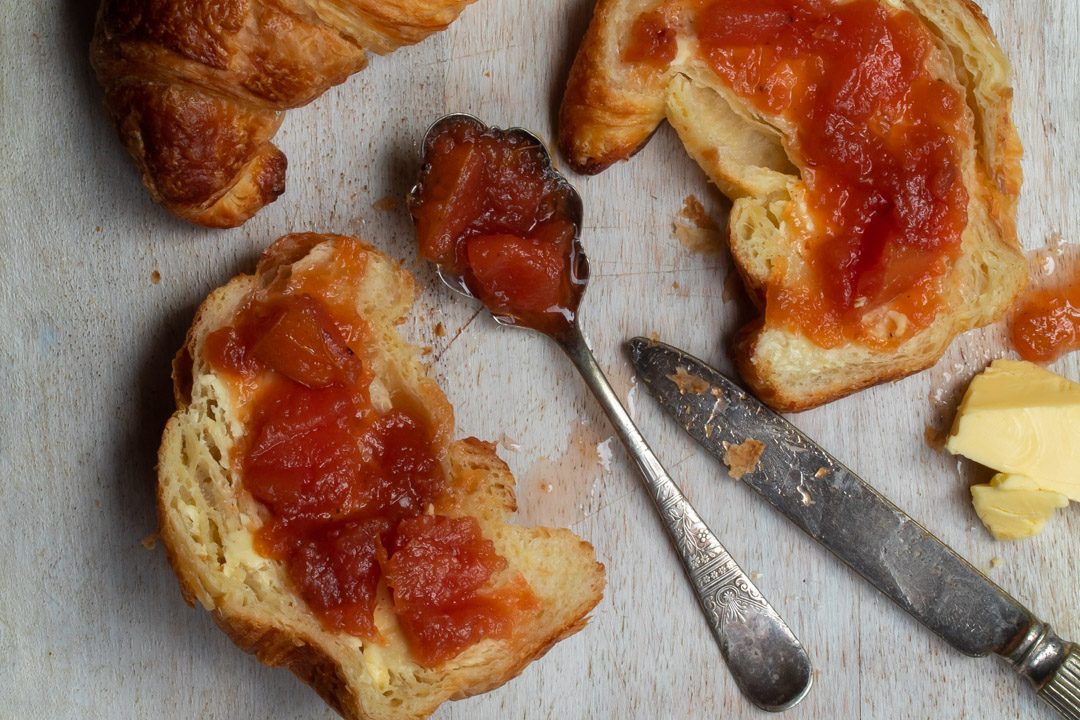
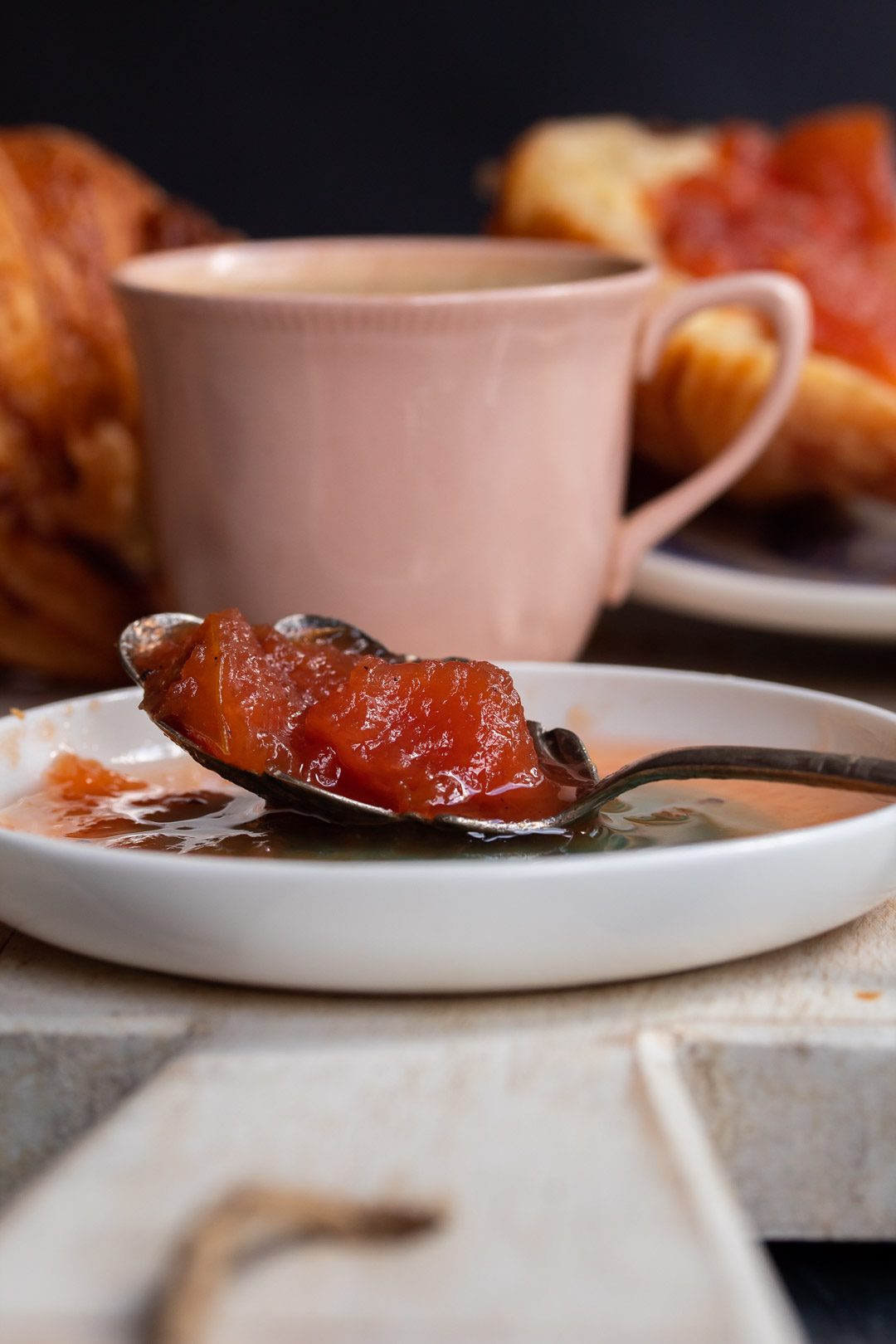
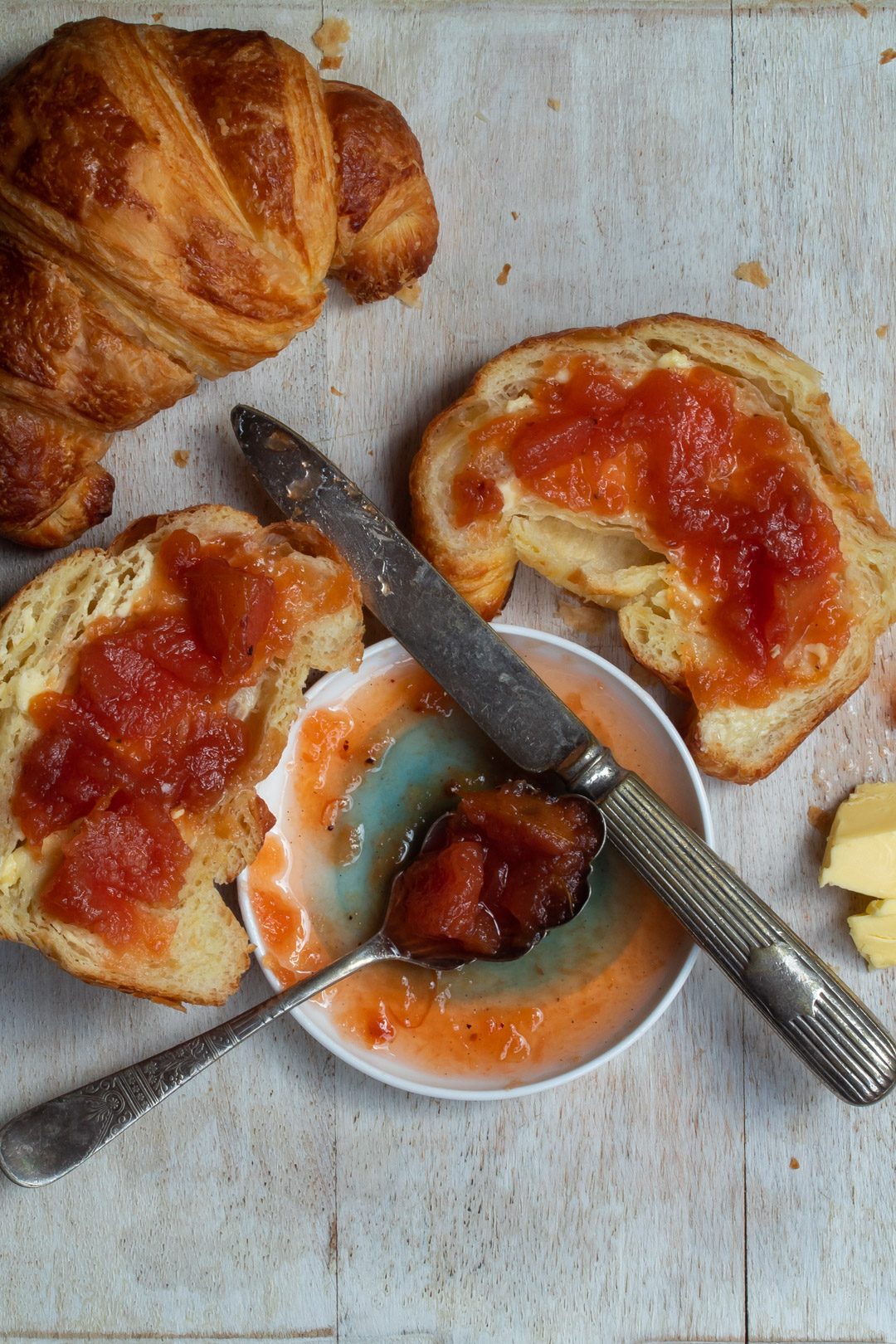
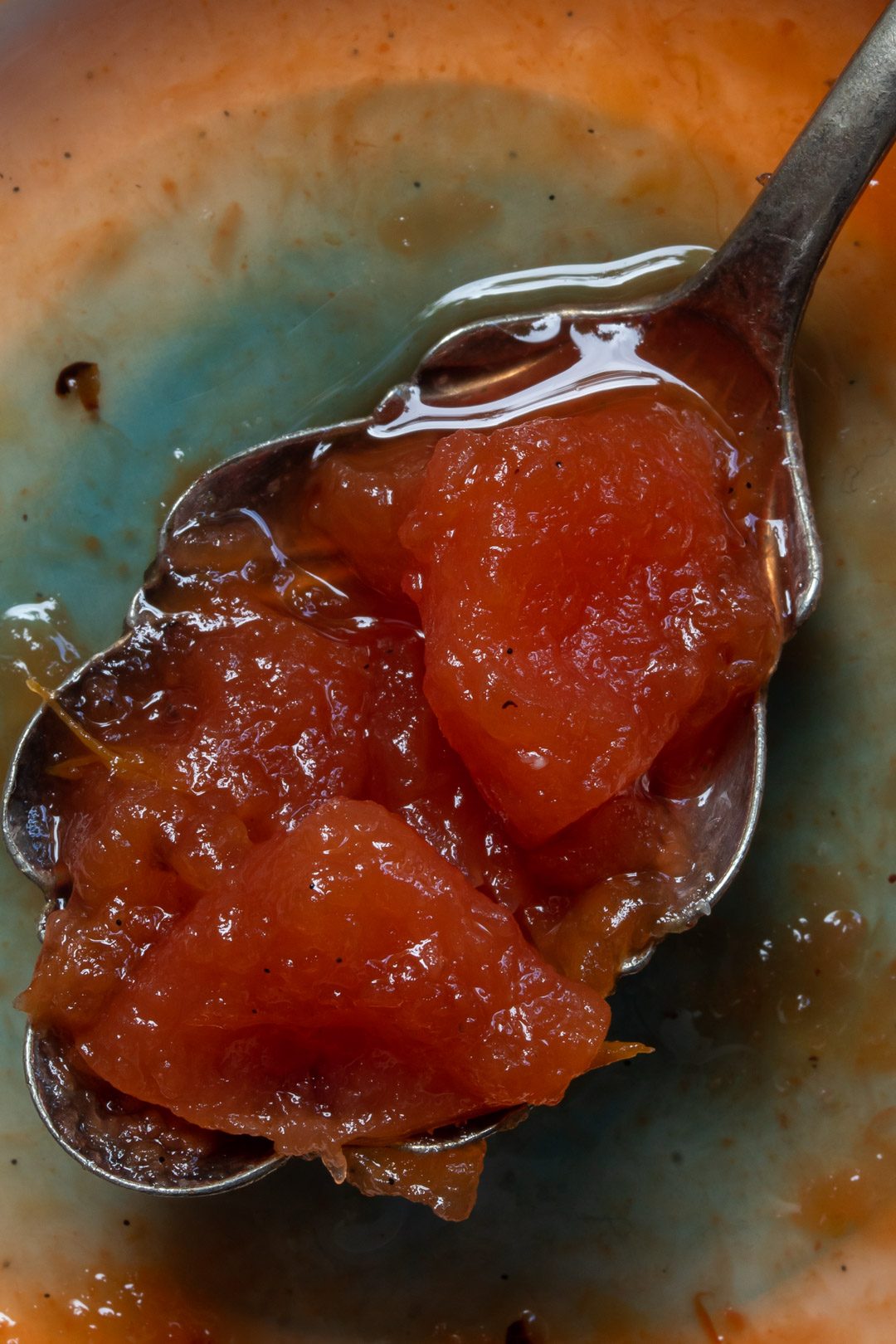
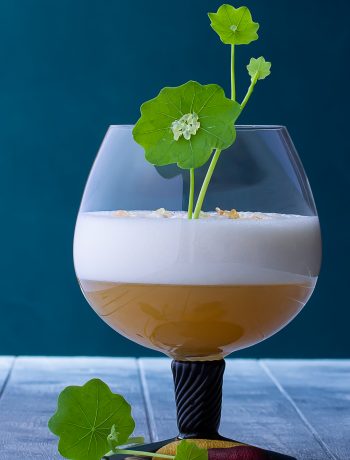
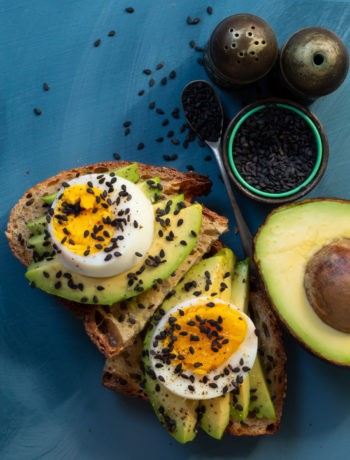
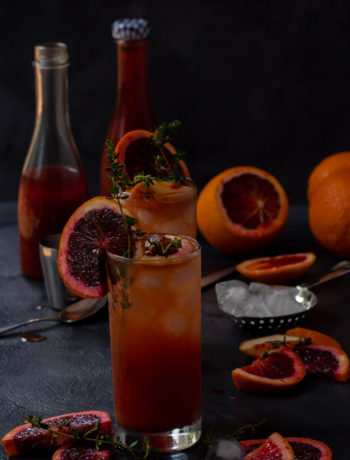
No Comments